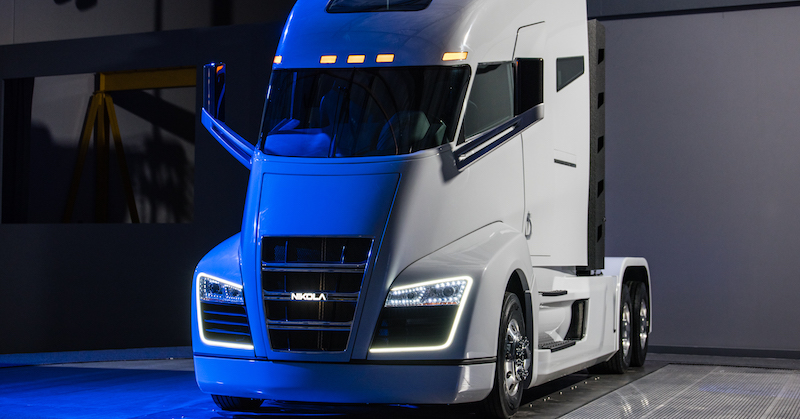The war within the zero emissions space continues to wage on, with battery electric vehicles (BEVs) having taken the spoils so far.
However, while some suggest that fuel cell vehicles (FCVs) have missed the boat, the technology far from dead in the water. In fact, fuel cell powertrains could play a leading role in commercial applications in coming years.
Going the distance
Generally speaking, FCVs may be better suited to long-distance driving than BEVs, both for passenger and commercial vehicles. Consider the Honda Clarity fuel cell with a driving range of 385 miles (620km), Toyota Mirai (around 300 miles) and Hyundai Nexo (414 miles). By comparison, the Nissan Leaf EV has a range of around 240 miles, and the Chevrolet Bolt 239 miles. Yet BEVs are catching up; the Tesla Model 3 can now be specified with roughly 325-mile range; the Polestar 2 with 310 miles and the Hyundai Kona with 280 miles.

“Today, many companies are making strong developments in fuel cell technology, and this has created a challenging and competitive situation between BEVs and FCVs,” said Oliver Knaus, Product Manager for Electrification at AVL Advanced Simulation Technologies. “In terms of applications, we see a large advantage for BEVs when it comes to shorter driving distances. However, when we look at longer driving ranges, FCVs have a strong advantage because there is not a linear relationship between vehicle weight and driving distance.
As he explained in a recent Automotive World webinar, FCVs can be easily adapted to long-range applications without requiring a platform overhaul to counteract any additional weight. For example, to accommodate a bulky and heavy EV battery pack—which can weigh more than a grand piano—overall vehicle weight would likely need to be cut out elsewhere. In an FCV, the solution could be as simple as enlarging the hydrogen fuel tank.
“With an increase in the size of the tank, we can easily extend the driving range of the vehicle,” explained Knaus, “and this opens up the opportunity for longer distance travel. Having said that, there is still significant effort going toward the improvement of fuel cell technology—from total powertrain concepts right down to individual components.”
CVs to go FC?
This translates well to the commercial vehicle (CV) space, where long range is not simply preferred—it is vital for business to run smoothly and efficiently. In order to convince Class 8 fleets to adopt zero emissions alternatives to diesel and natural gas, the range must be right.

New entrants such as Nikola Motor Company believe fuel cell powertrains will enable a seamless transition. The Nikola One, a Class 8 fuel cell truck, should have a driving range of between 500 and 1,000 miles, depending on the load. By comparison, the battery electric Tesla Semi—a close rival in what is a fairly uncontested segment—is said to achieve between 300 and 500 miles per charge. A fleet of fuel cell trucks co-developed by Paccar and Toyota will soon be deployed with a driving range of just 300 miles per tank, but will only be used for short-distance drayage around the ports of Los Angeles and Long Beach.
While the range advantage is attractive, FCV powertrains are inherently more complex than BEVs from a total system perspective, and bring a myriad of chemistry challenges. Localised water accumulation, overheating and fuel starvation are all serious factors to be considered when developing a fuel cell powertrain. Proton-exchange membrane (PEM) fuel cells also run the risk of becoming too dry. These are all issues that could drastically impact how the system performs.
“It is always important to avoid critical operating conditions,” said Knaus. “It is vital to understand exactly how the fuel cell is operating under different conditions—is excessive water in the fuel cell being generated, are membranes are drying out, or are certain elements overheating? The media supply must operate in ideal conditions, with the proper level of humidity in the membrane structure.”
Market appeal
The powertrain must also be optimised from a drivability standpoint in order to create an attractive driving experience, argued Knaus. Then there are durability requirements, which impact residual values and maintenance costs.
“The fuel cell needs to react quickly to power demands, and adjust accordingly to provide a dynamic response,” said Knaus. “We need to minimise the level of degradation that can happen in the fuel cell, but also understand which conditions can influence that and how to avoid it. We see these technical challenges throughout the entire development process.”

Today, fuel cell technology is not cheap, and costs are projected to remain fairly high in coming years. According to the US Department of Energy (DoE), achieving a total system cost of US$40 per kilowatt-hour (kWh) by 2020 will be “difficult to achieve.” For context, most EV batteries currently cost less than US$200/kWh, but are expected to dip below US$100/kWh by 2020. With low volumes for the foreseeable future, it is tough to see how fuel cell technology will usurp EVs on the cost front.
It will be interesting to see how the adoption of FCVs progresses in coming years. Global emissions targets are forcing manufacturers to consider all low and zero emissions options available, but driving range remains a high priority for drivers considering the move away from gasoline, diesel and natural gas. While infrastructure is an obvious sticking point outside of California and Japan today (and Europe by 2022), the appeal of a traditional fuel pump, shorter refuelling times and longer driving range may prove enough to attract greater investment.
